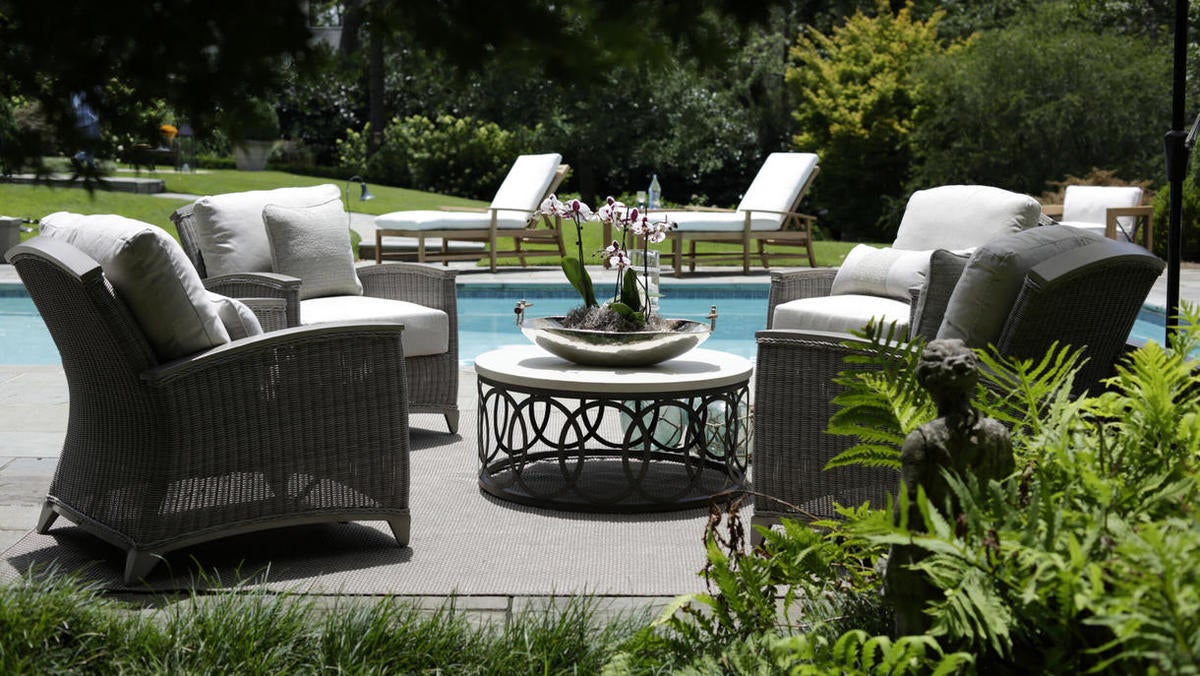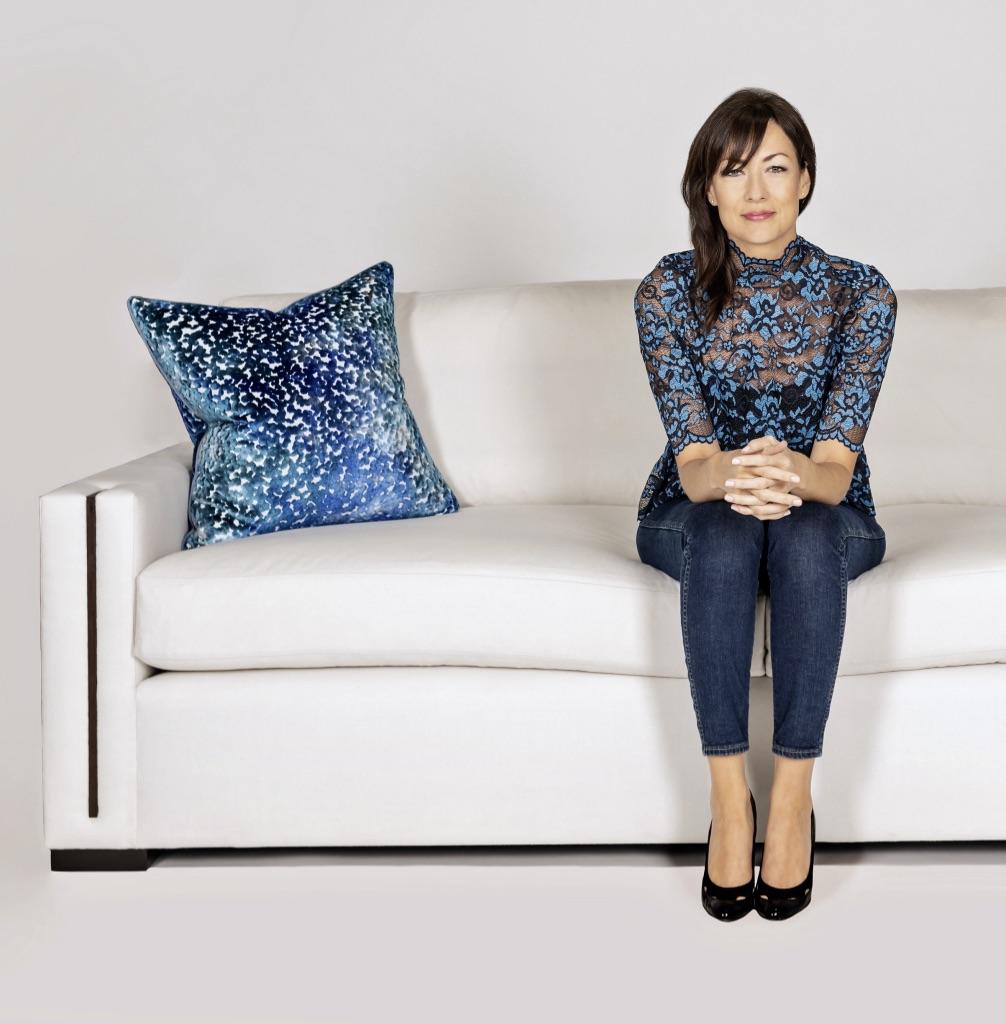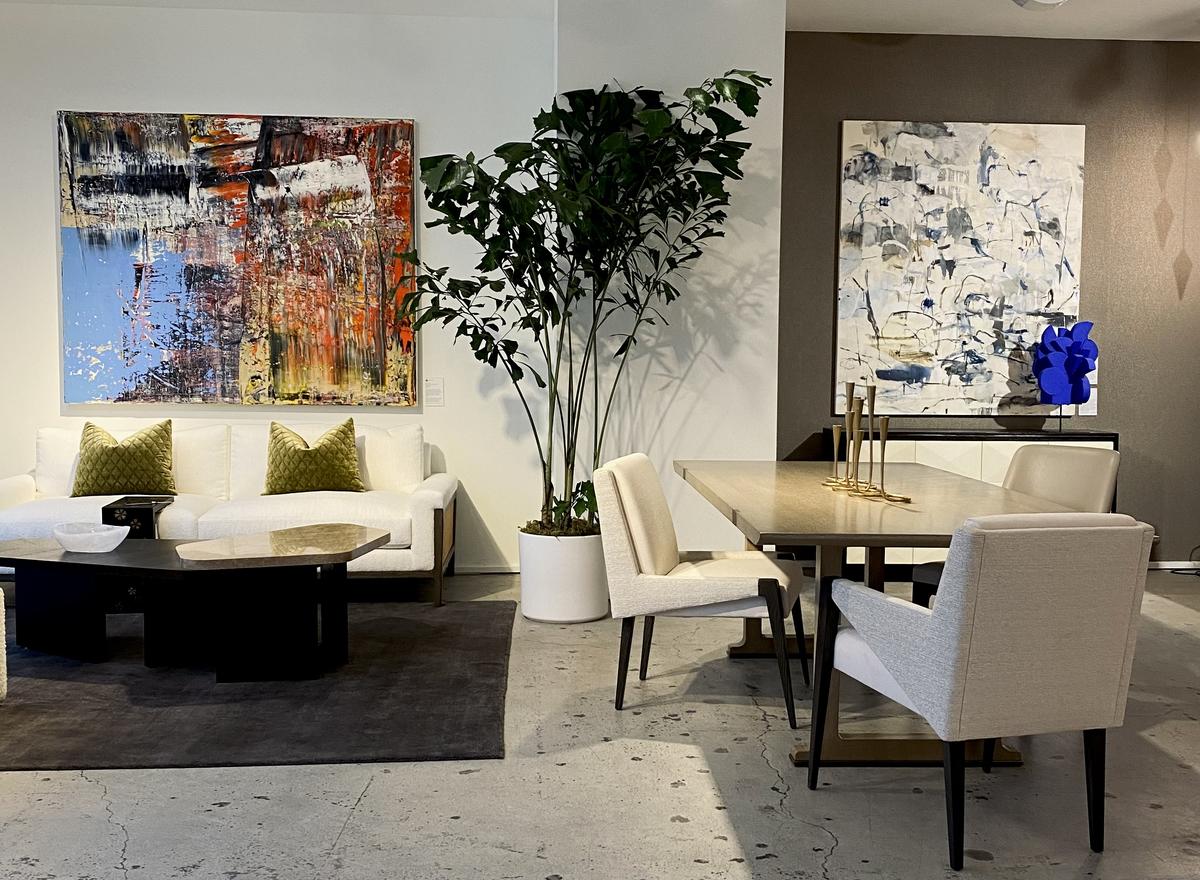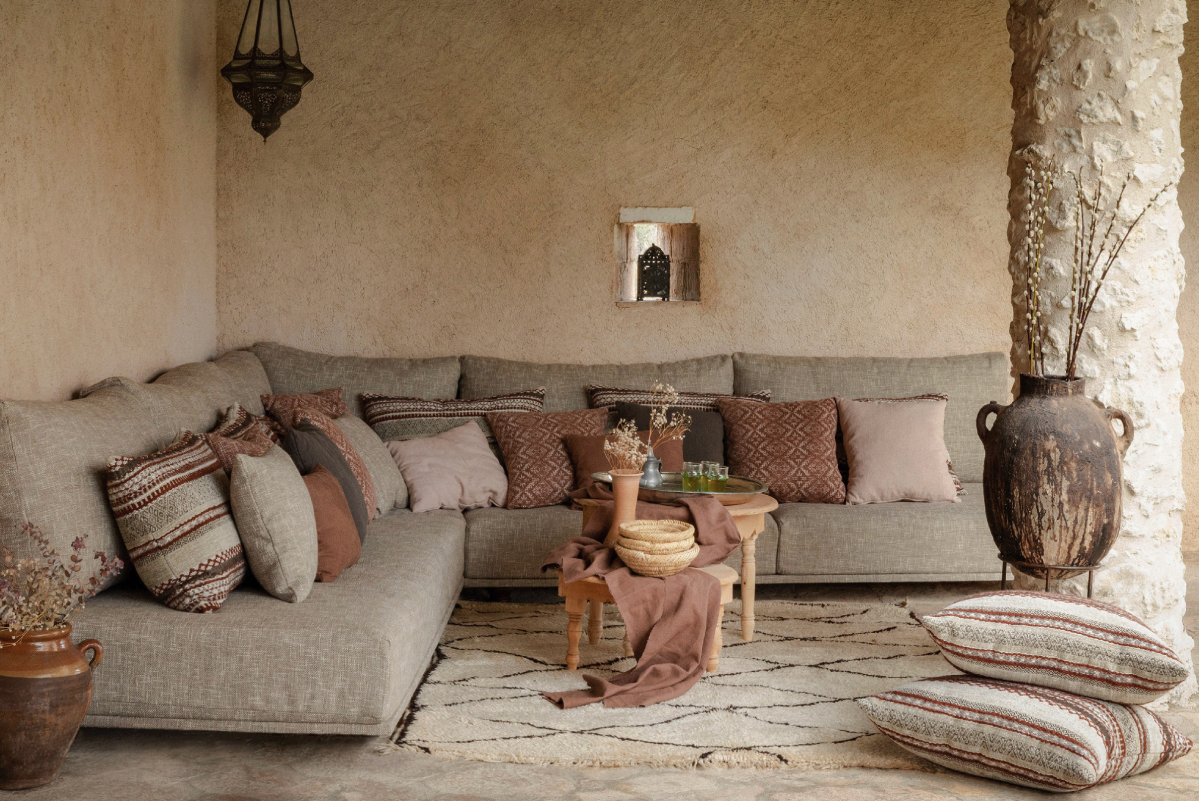Last week, High Point Market wrapped up a fall edition that could reasonably be described as the first normal-ish show in two years. After a year and a half of COVID weirdness, for attendees, it was a welcome step back toward business as usual. But amid the celebratory spirit in the air, there was a strange new phenomenon at High Point this year: price increases.
It’s hard to overstate how strange a bump in pricing is in the home furnishings industry, especially for large-scale manufacturers. Ever since much of the industry shifted to overseas production two decades ago, the race has been to cut costs and increase efficiency, not to goose prices—the cost of furniture has barely kept up with the rate of inflation. So it was no small shock to realize that over the past 18 months, brands had quietly raised prices two or three times. The increases are relatively modest on their own, but taken together, they amounted to anywhere from 5 to 25 percent hikes since 2019—to say nothing of shipping surcharges that can add another 8 percent to the receipt.
There’s no longer any doubt: Inflation has come to the design industry. Does it matter?
THE ORIGIN OF PRICE HIKES
One of the funny twists of reporting on price increases is that, while everyone agrees they’re happening, it’s extremely difficult to get anyone to admit they have done it. CEOs stop replying to emails, and conversations quickly go off the record. However, while the act of raising prices is still somewhat verboten, the reasons behind it are a matter of public record.
At this point, none of the causes are a surprise to anyone in the design trade. Everything, everywhere, is getting more expensive as a result of the supply chain snarls brought on by COVID-19. When the world shut down last spring, the manufacturing industry went into recession mode and scaled back. When demand for consumer goods—especially home goods—leapt back with a vengeance, it was a shock to the system that we’re continuing to grapple with now.
Shipping is crazy costly. The cost of raw materials is up. Labor is in short supply. For almost any maker in the home world, producing goods has become exponentially more expensive. However, that doesn’t mean inflationary forces are affecting everyone in the industry equally. Thus far, a real divide exists, and it’s mainly between large brands that ship the majority of their product in from overseas and those that make it domestically.
The reasons behind that are fairly simple. Over the past year, the price of a container has jumped from $6,000 to as high as $30,000 in some cases (for comparison, imagine the price of a glass of wine at a restaurant going from $15 to $75). That alone has weighed heavily on brands who import much of their inventory, especially those that sell both to the trade and retail.
Larger brands are also affected by the cadence of production. If a company is making dozens or hundreds of pieces a day, it has to order raw materials more frequently and is more subject to fluctuations in price—even those caused by non-COVID-related calamities like the winter storms that knocked out foam production earlier this year.

All that is to say that companies that import goods from overseas (often, that means mid-market brands or retail-scale manufacturers) have essentially had no choice but to continually hike prices over the past year to maintain a profitable margin.
There are some accommodations made for the trade that aren’t offered at the consumer level. Most manufacturers have been giving their customers a heads-up that prices are on the rise, giving them a chance to lock in a lower rate. Others allow longtime customers to purchase at quoted rates that are quickly becoming obsolete as suppliers hike their prices. (Bew White, the founder of Summer Classics, recently told a story on The Business of Home Podcast about a supplier changing the price of goods while the containership was on the ocean—the equivalent of Domino’s calling you while your pizza is en route to tell you the price had doubled.)
However, despite the various measures that brands are taking to try and keep customers happy, there’s no doubt that such accommodations are getting more painful for manufacturers as prices continue to fluctuate wildly.
INFLATION STARTS AT THE BOTTOM
If mid-market and large-scale manufacturers have been striding into a higher price point, boutique, trade-only brands have been tiptoeing into the territory. Because prices in the upper echelons of the design world are somewhat opaque, it’s difficult to be precise about how much or how little the numbers have gone up. However, an informal survey of multiline showroom owners and boutique brands indicated that inflation is more subtle in the upper tier of the market.
“Aside from a specific increase in the cost of bronze, I would say overall we haven’t really seen that many price increases this year,” says Ryan Hughes, founder of the popular Atlanta showroom R. Hughes. “Typically, most of our vendors have yearly price increases, but they are nothing crazy.” The same general sentiment was reflected elsewhere in the high end: Price hikes aren’t really a big thing right now.

Much of that may be because top-tier makers tend to produce domestically and aren’t subject to the same increase in freight costs as larger retail operations. Some of it may also stem from the fact that showroom brands don’t turn over nearly as much inventory, and may well be sitting on raw materials they purchased in 2017 to make custom pieces that sell at the rate of three per year. The boutique high-end is well situated to absorb cost increases.
But there’s another element that slows down price hikes in the top tier, and it’s more psychological than practical. Boutique makers tend to be close to their customers; the relationships are very intimate—and costly. For large brands, the idea of losing one client because of price hikes is painful, but not the end of the world. For a boutique maker who may sell to only a few dozen designers a year, losing one client can feel catastrophic.
“I think boutique manufacturers are really hesitant to raise prices because they don’t want to price themselves out of the market,” says Heather Sawtelle, founder of the trade-oriented e-commerce platform Bellvine. “Their costs have gone up, but they’re worried about competition at a lower price point, and they want to stay attractive to designers.”
Jillian O’Neill, a former interior designer who launched her own boutique product line in 2017, hasn’t upped prices at all, despite an increase in costs from her Texas-based workroom. Partially, she says, it’s because she’s somewhat new to the market and doesn’t want to rock the boat. But there’s an element of closeness and empathy with her customer base that makes her hesitant to raise prices.
“I was a designer, so I’ve really been in the trenches and I know what it’s like,” she says. “I want to be a good partner, and I think designers are dealing with far more issues than I am as a vendor. The most important thing for me right now is to keep that relationship and build trust. … The margins have gotten slimmer, but [by manufacturing in the U.S.], it’s not quite as bad as it could be.”

Of course, many showroom brands have raised prices—but cost increases have not been on par with those of large-scale manufacturers. Jobst Blachy, the founder of Quintus, which is both a trade furniture brand and a showroom, says that in general, he’s seen low single-digit markups on pricing. He followed suit—only the first price increase in three years.
“In the end, we are selling a bespoke, luxury product. So I didn’t have to jump too fast to increase my prices. I waited for things to settle, and then made a reasoned decision on how much we should increase,” he says. “I recognize that we already sell at premium prices, and I didn’t want to price us out of the market. I looked at margins, but also tried to use common sense when looking at an increase.”
That’s the present mood. It’s less clear what will happen in the near future. Many boutique makers are quietly accepting a slimmer margin for now, especially because demand is so high. But if the cost of doing business continues to creep upward, expect even the most rarefied of brands to increase prices.
Echoing a common sentiment, one boutique furniture maker told me, “I’m holding on for now, with an emphasis on for now.”
KICKING THE CAN DOWN THE ROAD
Inflation is making national headlines at the moment, causing uncertainty in the stock market and threatening President Biden’s political future. The issue is a hot topic seemingly everywhere—except the design industry. Even though everywhere you look, prices are going up, the trade’s attitude toward inflation seems to be a mild, distant concern. It’s a problem for later, not now.
There are structural reasons for that. For one thing, interior designers—who drive purchasing—are not acutely incentivized to push back hard on higher prices. In fact, those who charge on a markup benefit from them. That’s not to say that designers don’t advocate for a fair price on behalf of their clients, but the purchasing process in the design world complicates the traditional “brakes” on inflation for consumer goods.
Add to that the fact that in the higher tiers of the market, price is rarely top of mind anyway. When an affluent client falls in love with a particular silk velvet, they’re not going to be put off by a 4 percent price hike.

But those conditions are always true. The reason no one in the design industry seems to care about inflation in 2021 is simple: Demand is through the roof. What has dominated conversations over the past year and a half is how to get product in fewer than eight months, not how much it costs.
That surge in demand has papered over what would, in a different time, be a constant subject of conversation. Even with ubiquitous price increases, vendors at High Point could barely keep floor models in stock. “I spoke to [a showroom owner in Texas] who took their own truck to High Point to buy models off the floor,” says Beth Bender, principal at The Dove Agency, a Dallas-based consulting firm for interior designers. “That was what I heard over and over: People are buying whatever they can get.”
Because the COVID era has been such a robust period for the home industry, it almost feels beside the point to fret over costs. Brands that have raised prices are banking on the fact that they’re likely selling more than they can produce anyway. And those that haven’t are hoping that increased volume will make up for reduced margins. The basic bet is: As long as people keep buying for the home, there’s no reason to worry about this too much.
THE LONG-TERM OUTLOOK
Whether a brand has raised prices yet or not, one thing is clear: The cost of doing business is not going to drop just because the supply chain starts to even out a little. Much of the root cause is due to price hikes by large shipping conglomerates, and even if a new player wanted to compete, it takes serious time and money to start building up international shipping routes. Plus, at least on the supply side, prices just have a way of staying high even if the initial spike was caused by extraordinary circumstances.
“I’ve found over the years that when our suppliers raise their prices for whatever reason—hurricanes, war, shipping issues, etc.—they never come back down again,” says Blachy. “The prices keep going up.”
For the moment, when the market is hot, most companies can suck it up. But planning for the long term presents a complicated choice. If brands don’t aggressively raise prices, they risk facing a day when demand slows down and the cost of doing business hasn’t. If they do raise prices, they risk pricing themselves out of the market—especially when demand slows down and buyers get a little more picky.

Whatever the challenges for individual companies, there are systemic risks as well. Stephane Silverman, the founder of Castel Fabrics and president of the Decorative Furnishings Association, is concerned that inflation will spin out of control and make trade products inaccessible to all but the most affluent end users. That’s especially true, argues Silverman, because design industry pricing is subject to a multiplier effect: Raw material prices go up, then brand pricing goes up, and a designer markup pushes the price yet higher.
“With that multiplier effect, the price to the end user who’s getting their home decorated is going to be so expensive. [The trade] is going to lose market share,” he says. “And granted, retail prices are increasing too. But my fear is that people are just not going to see the value in the product, and I think that there’s an entire ecosystem that’s going to get shaken up—maybe not now, but in the next 18 months, you’ll see this start to happen.”
Silverman is also betting that inflation will have an effect on what kind of product gets made, especially in fabric. His thinking: As the cost of restocking SKUs continues to rise, brands will focus only on their bestsellers and start to let lesser-used patterns fall by the wayside. “I can see there being a massive discontinuation of product, because brands will feel they can’t raise prices that much, and the cost of restocking will keep going up, so they’ll cut back on their lines, and they’ll be forced—if they want to keep coming out with new stuff and staying relevant—to look at cheaper materials,” he says.
Inflation, Silverman speculates, could also lead to other disruptions in the design business. If brands can no longer be profitable with their current margins, and they can’t raise prices, they’ll be forced to cut costs in their distribution model—potentially pushing them out of the classic showroom model and going direct to designers, or scaling back sampling and other services.
Whatever they are, it’s hard to imagine that there won’t be at least some consequences for price hikes of the recent past and near future. But with demand continuing to be strong even as COVID enters (hopefully) its final chapters, there doesn’t seem to be an appetite for stressing about them too much at the moment. Right now, it’s a pretty simple equation: If you can sell it, someone will buy it.
“If higher prices were impacting demand, I’d see it in procurement [for the firms we represent],” says Bender. “But that’s not the case. The numbers just keep going up. I literally can’t hire people fast enough to keep up with the volume of procurement. … I don’t see any sign of this slowing down.”
Homepage photo: ©Shi/Adobe Stock



























